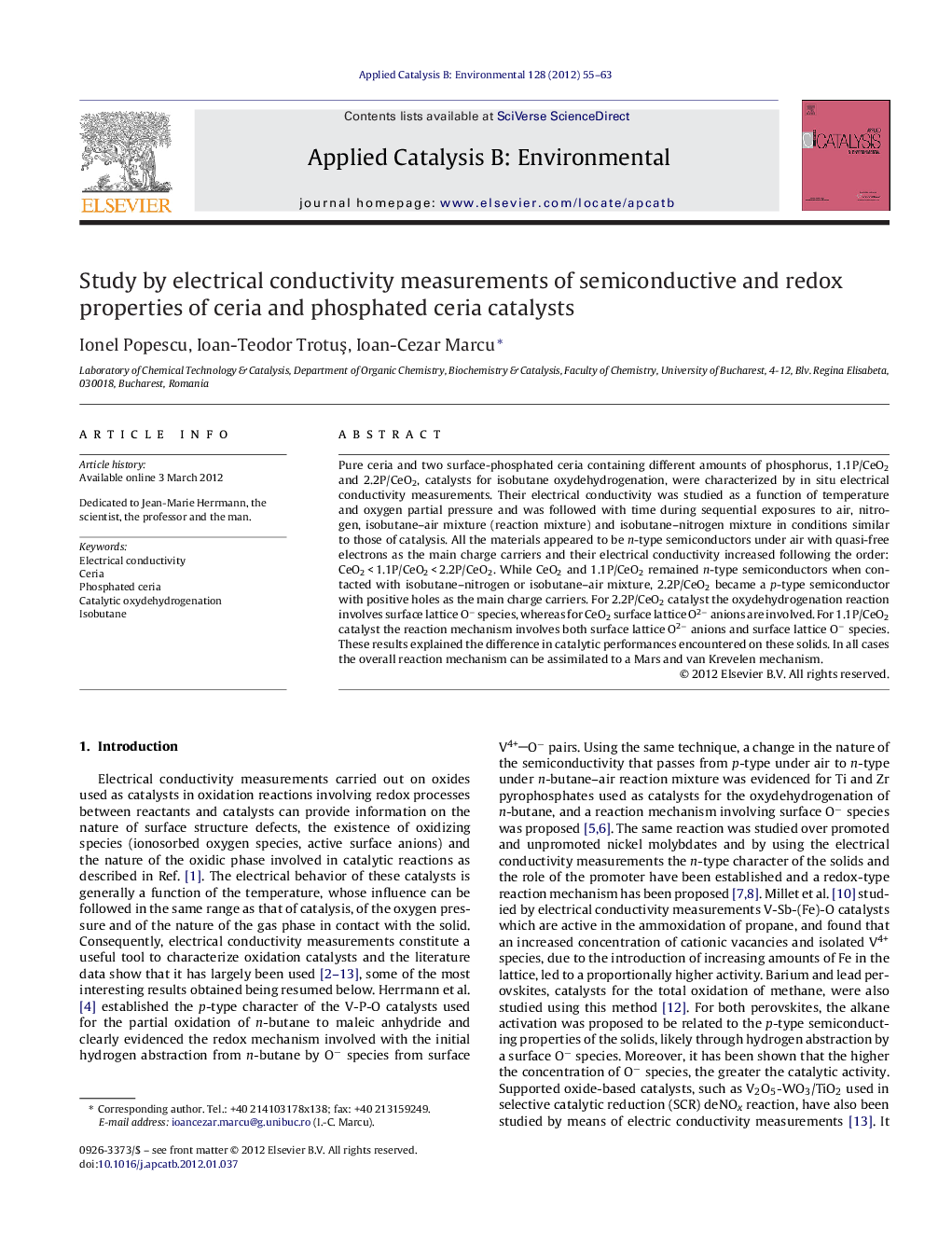| Article ID | Journal | Published Year | Pages | File Type |
|---|---|---|---|---|
| 46612 | Applied Catalysis B: Environmental | 2012 | 9 Pages |
Pure ceria and two surface-phosphated ceria containing different amounts of phosphorus, 1.1P/CeO2 and 2.2P/CeO2, catalysts for isobutane oxydehydrogenation, were characterized by in situ electrical conductivity measurements. Their electrical conductivity was studied as a function of temperature and oxygen partial pressure and was followed with time during sequential exposures to air, nitrogen, isobutane–air mixture (reaction mixture) and isobutane–nitrogen mixture in conditions similar to those of catalysis. All the materials appeared to be n-type semiconductors under air with quasi-free electrons as the main charge carriers and their electrical conductivity increased following the order: CeO2 < 1.1P/CeO2 < 2.2P/CeO2. While CeO2 and 1.1P/CeO2 remained n-type semiconductors when contacted with isobutane–nitrogen or isobutane–air mixture, 2.2P/CeO2 became a p-type semiconductor with positive holes as the main charge carriers. For 2.2P/CeO2 catalyst the oxydehydrogenation reaction involves surface lattice O− species, whereas for CeO2 surface lattice O2− anions are involved. For 1.1P/CeO2 catalyst the reaction mechanism involves both surface lattice O2− anions and surface lattice O− species. These results explained the difference in catalytic performances encountered on these solids. In all cases the overall reaction mechanism can be assimilated to a Mars and van Krevelen mechanism.
Graphical abstract.Figure optionsDownload full-size imageDownload as PowerPoint slideHighlights► Oxidation reaction mechanism over ceria and surface phosphated-ceria catalysts. ► Surface lattice O2− species involved in the isobutane reaction on ceria. ► At high P content, CePO4 phase controlled both the electric and catalytic properties. ► Surface lattice O−species involved in the isobutane reaction at high P content. ► At low P content, both O2−and O− species were involved.
